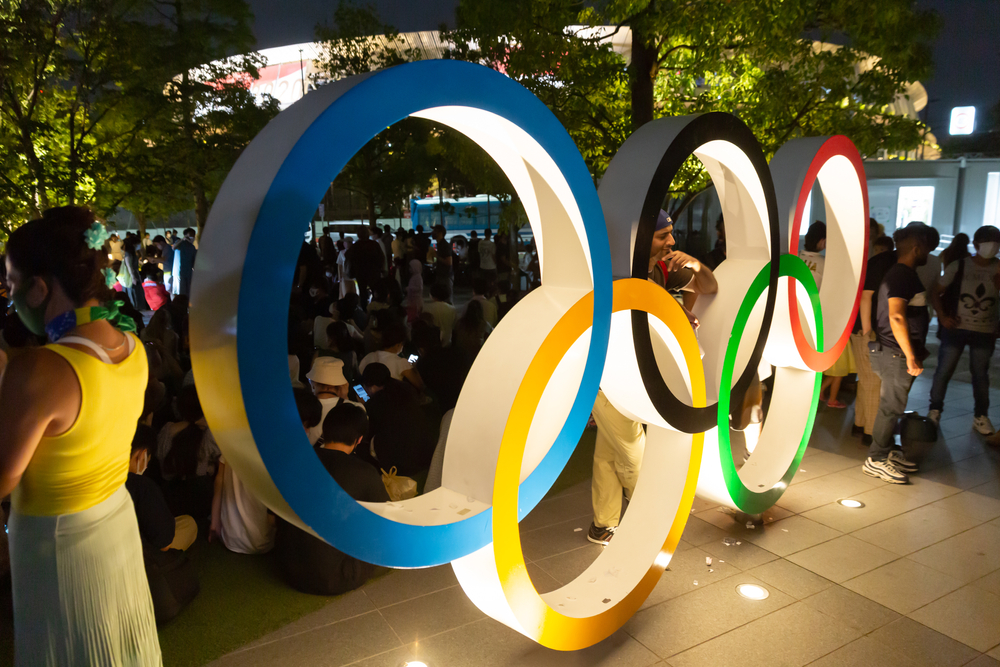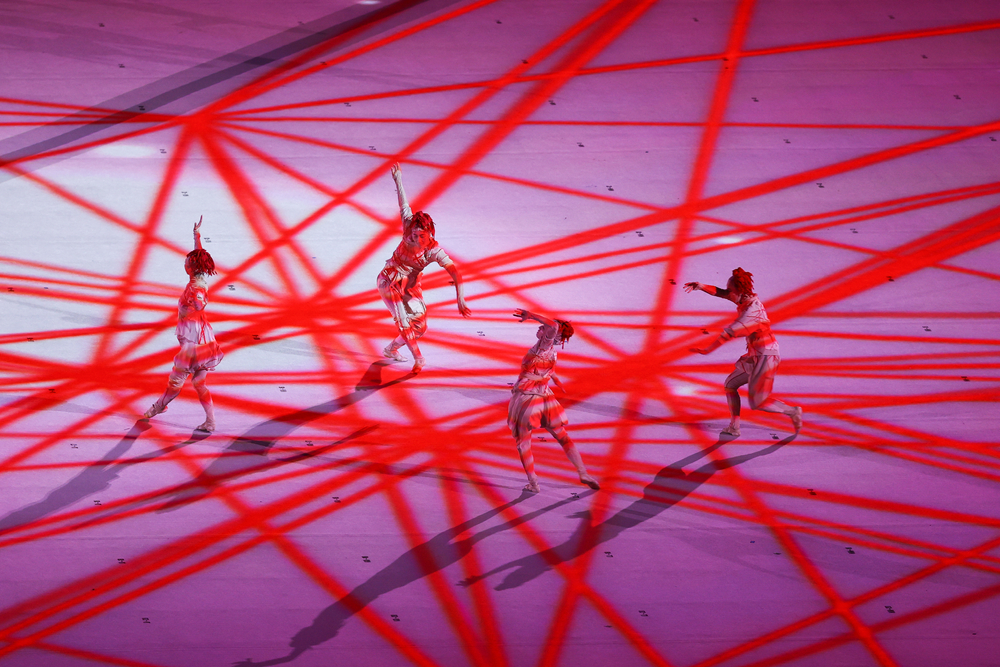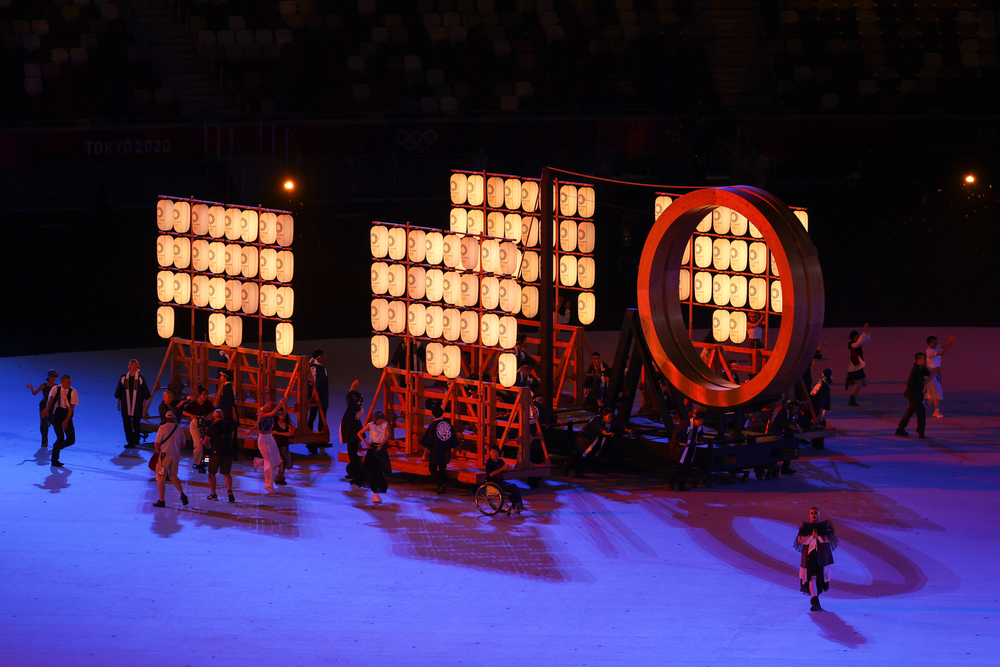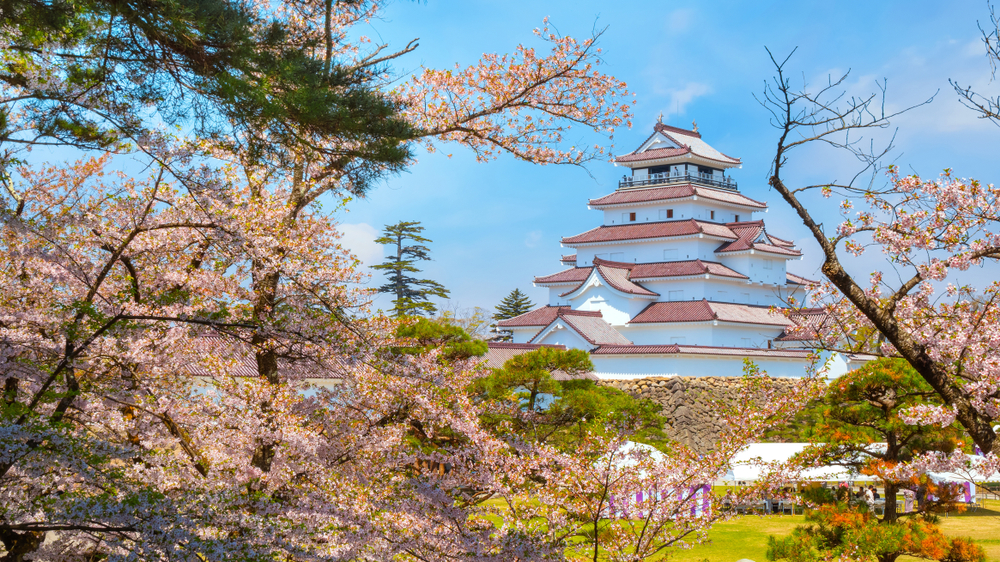
Tokyo 2020 (2021) Olympics is surely one for the books in many ways. Ever since former Prime Minister Shinzo Abe emerged as Super Mario at the closing ceremony of the 2016 Rio Olympics, people have anticipated the Tokyo Olympics.
During my visits to Japan in 2019, Tokyo is hard at work in preparation and promotion of the sporting event. Banners and streamers adorned the streets and I visited the reconstructed Nippon Budokan that will be used for the games.
Japanese culture and tradition
After a year of delay, watching the opening ceremony of the Tokyo Olympics is like watching Taylor Swift’s music video as it is peppered with Easter eggs. The opening ceremony was filled with details that represent Japanese culture and tradition.
Logo

First, the geometric ring logo of the Tokyo Olympics is based on “ichimatsu moyo” and is a popular pattern on Japanese fabrics like kimono and furoshiki. The checkered pattern represents “prosperity” because of its repetitive and continuous design.
The colour of the emblem is based on indigo blue or Japan blue, which is the colour of the traditional dying art in Japan. The last time I visited Japan, we visited a shop where they taught us how to dye a tenegui using this method.
Performances

During the opening ceremony, one of the performances showed the dancers twisted long, red strings that is inspired by centuries-old game called “Ayatori,” which is manipulating a looped yarn to form shapes and figures.
Another performance during the ceremony showed Japan’s traditional carpentry or Sashimono, which is one of the high levels of craftsmanship in the country. Speaking of woodworks, the Olympic Stadium or Nippon Budokan made use of wood from all 47 prefectures in Japan. As if that is not enough, every beam was carefully-placed so it was pointing to the direction of the prefecture where it came from.

The said performance also depicted “matsuri” or festivals where the whole neighbourhood come together to organise each year. This rings similar to the spirit of the Olympics – Faster, Higher, Stronger, Together.
And just like how every matsuri ends with fireworks, the opening ceremony is completed with the most elaborate pyrotechnics that light up the Tokyo skyline that day. Can’t help but shout “Tamaya!” while watching the Olympics’ opening ceremony.
The thousands of drones that light up the sky showed how dynamic and technologically-advanced Tokyo is. There was also a Kabuki and jazz performance, which symbolises the traditional and modern forms of entertainment popular in Japan.

Towards the end of the opening ceremony, our attention is directed to the pyramid-like structure reminiscent of Mt. Fuji, representing athletes’ metaphorical mountains they need to overcome. Meanwhile, the sphere on top of it symbolises Japan’s hinomaru and a beacon of hope in these trying times. The sphere turned out to be the Olympic cauldron that will hold the Olympic flame that never dies.
Parade of nations
For the very first time, countries entered according to the Japanese alphabet [あ、い、う、え、お (a, i, u, e, o)] during the parade of nations. That is why Yemen (イエメン) walked before Australia (オーストラリア). The countries’ names are written in placards designed as speech bubble in manga. The ushers were also seen wearing clothes with manga drawings. Manga is one of Japan’s biggest industries and is known worldwide.
Athletes and representatives of each country marched to the tune of soundtracks of video games such as Dragon Quest, Final Fantasy, and Monster Hunter celebrating the video game industry that took the world by storm.
Full circle
Japanese loves things coming in a full circle. The current Olympics is the second time summer Olympics is held in Tokyo. The last time was in 1964. During one of the performances where they showed Japan’s traditional art of woodworking, the final product is the Olympic rings made out of trees from the seeds that athletes brought in 1964.
It was also in Tokyo 1964 Olympics that pictogram was first used as visual aid to bridge the language barriers among nations. We must admit that Pictogram-san’s performance stole the whole show, but doesn’t it remind you of Japanese comedy show like this one. Now, pictograms are used in various Japanese products and also in tourism to help tourists who are lost in translation.
3.11 Recovery
This year marks the 10th-year anniversary of the 9.0-magnitude earthquake that devastated the Tohoku region. Tokyo 2020 Games aim to support the recovery efforts in the region and to show the power of sports in boosting the morale of a nation.
Many athletes have toured the region and have met students playing sports. Sport has the power to connect people and encourage people to have a dream.
Determined to show the world Japan’s 3.11 recovery, some of the events and games will be held in Tohoku such as the highly-anticipated baseball and softball matches in Fukushima Azuma Baseball Stadium.

Food from areas affected by the Great East Japan earthquake and tsunami in 2011 is being supplied to the Tokyo Olympics. Fear not, for the supplier and ingredients have acquired certification making sure they are safe to eat.
Nobuaki Kasai, director of Kasai Nousan, a company that produces vegetables in Iwate prefecture, said through a translator: “Since Japan is hosting the Olympic and Paralympic Games this time, I talked with my peers in the farming business that we too shall take part in the Olympics by acquiring the G.A.P. certificate and supplying food ingredients.”
The Good Agricultural Practices (G.A.P) is an international scheme that encourages environment0al practices and sustainability.
Drama

The Tokyo Olympic Games was hit with scandals with many of its high ranking officials quit months before the games. Moreover, a survey revealed that most people are against of the games due to the threat of Covid-19. However, the Japanese (or at least the organisers) knows how to appease the public and tug some heartstrings when they casted Japanese baseball icons Hideki Matsui, Sadaharu Oh and Shigeo Nagashima as Olympic torchbearers marking the return of baseball in the Olympics after 12 years. Baseball is one of the most popular sports in Japan and many grew up watching these three battling in the major league making every Japanese proud. If that is not dramatic enough, the final torchbearer is tennis superstar Osaka Naomi, who has faced adversity because of mixed race.
Among the torchbearers in the national stadium are the six middle and high schools students from regions devastated by the Fukushima Daiichi nuclear disaster. The same tactic was used in 1964 when one of the torchbearers is a college athlete born in Hiroshima on August 6, 1945 – a survivor of the nuclear bombing.
How would you rate the Tokyo Olympics opening ceremony?
Sign up to subscribe to my newsletter